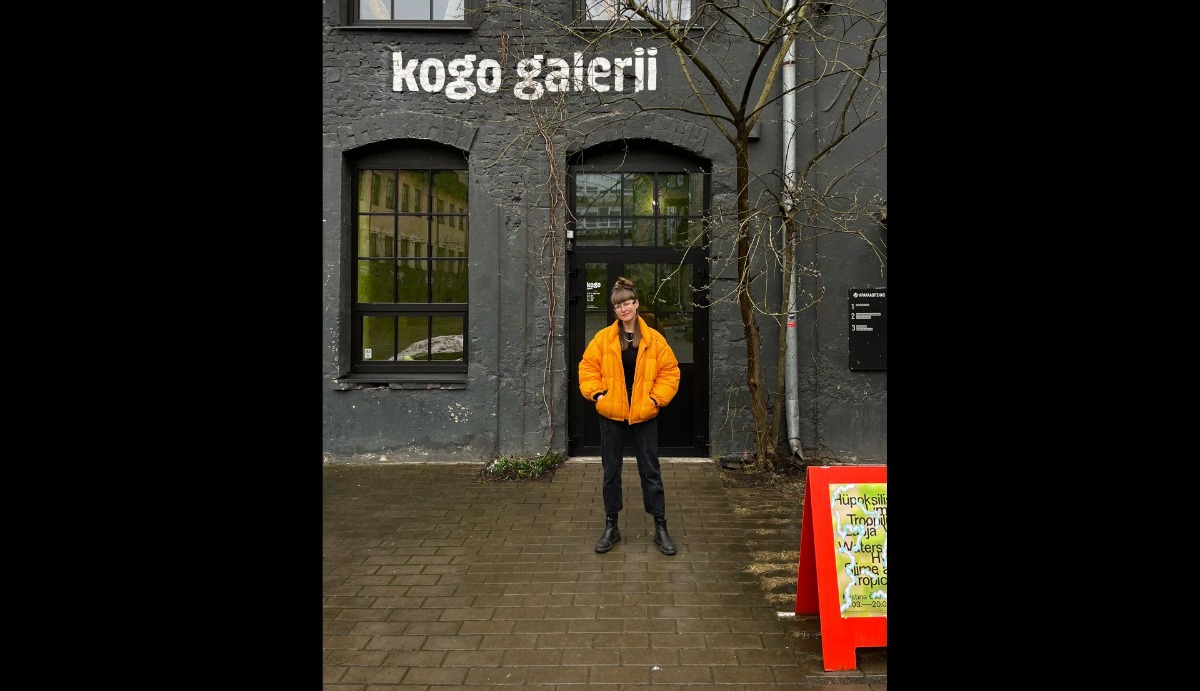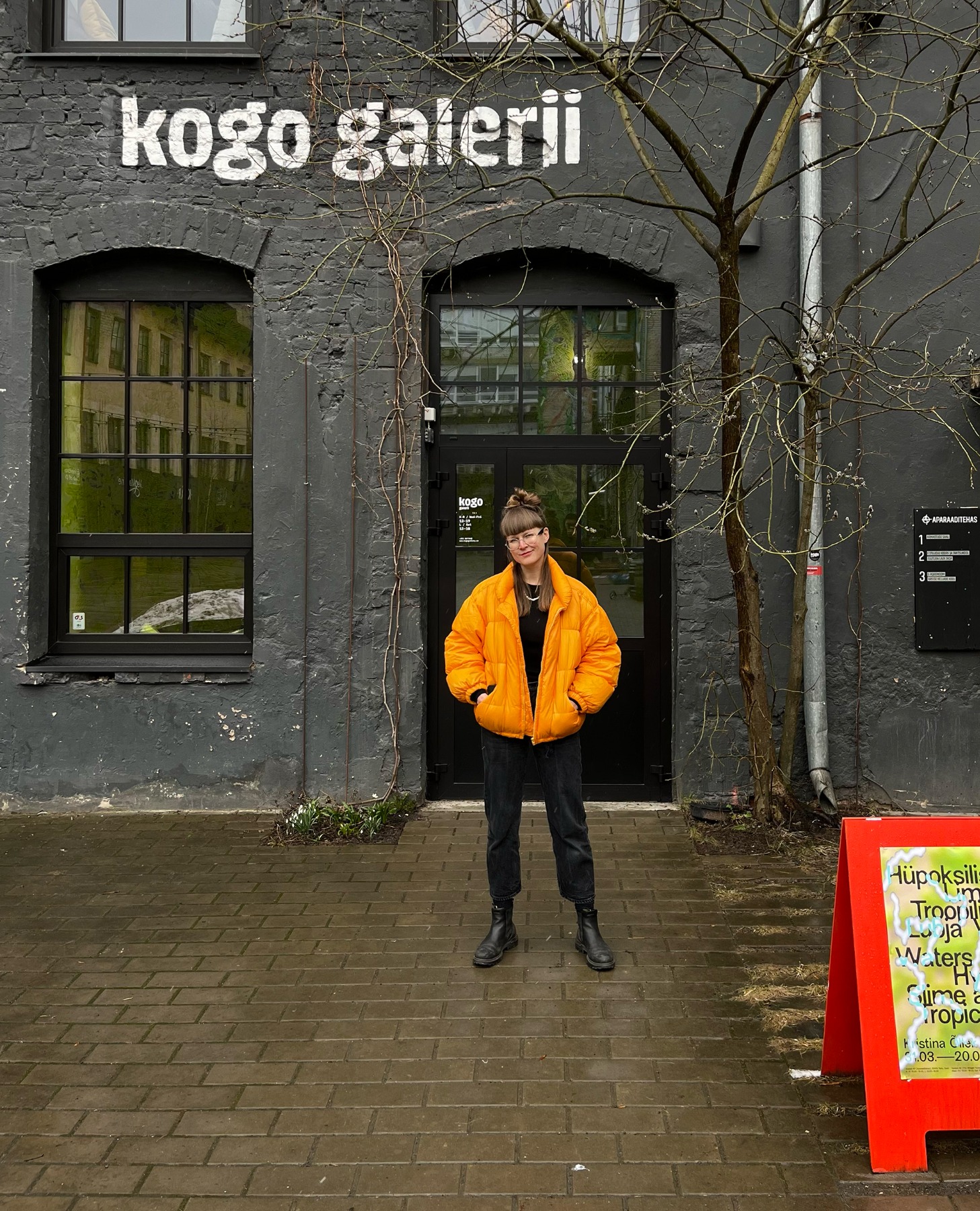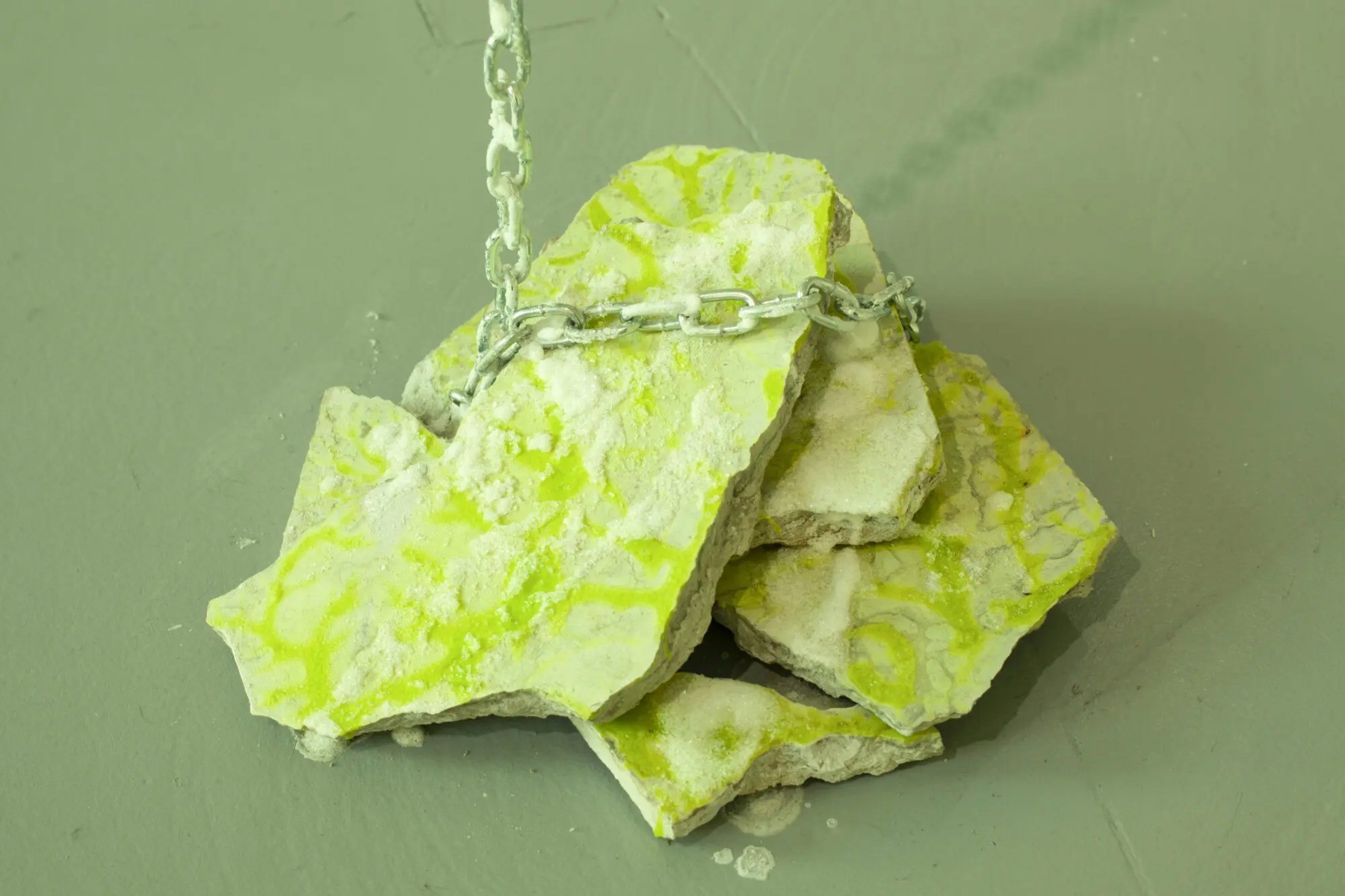
Focus on the Baltic Sea
An interview with Estonian visual artist Kristina Õllek
Kristina Õllek's solo exhibition Waters of Hypoxic Slime and Tropic Lime, currently on view (till May 20) at the Kogo Gallery in Tartu, centres on the study of the Baltic Sea area with a focus on its marine ecology, cyanobacteria, and sediments.
As a continuation of her recent solo exhibition Filtering With Cyanobacteria, Double Binds and Other Blooms at the ISSP Gallery (Riga, Latvia), Õllek explores the geological and chemical changes of the Baltic Sea.
For the solo exhibition at the Kogo gallery, Kristina Õllek worked with limestone, sea salt, cyanobacteria, bioplastic, clay, and other materials to make them part of the photographic works, thereby imbuing the installation with another physical layer and materiality with its own agency. Comprising photographic and sculptural elements, the artist presents her thoughts about the aquatic Baltic Sea area – its past, present, and future speculative scenarios regarding its changing ecological composition and marine chemistry.
Kristina Õllek has BA and MA degrees from the Estonian Academy of Arts (Fine Arts, Photography), has studied at the Piet Zwart Institute in Rotterdam (2016), and at Kunsthochschule Berlin-Weissensee (2012). She was the laureate of the Estonian Academy of Arts Young Artist Prize in 2013 (BA) and in 2016 (MA). Since 2013 she’s a co-founder and member of the artist-run space Rundum. Her works have recently been shown in various international group and solo exhibitions in Estonia and abroad. She is a laureate for the Estonian state artist’s salary in 2023–2025.
Arterritory.com presents the following interview with Kristina Õllek.
Waters of Hypoxic Slime and Tropic Lime, Kristina Õllek, Kogo Gallery, 2023. Photos: Kristina Õllek
Why did you decide to focus your show on the geological and chemical changes going on in the Baltic Sea? Could you also briefly explain the research part of preparing for it?
After the first lockdown regulations were eased in June 2020, my partner and I moved back to Tallinn by crossing the Baltic Sea by ferry. It took us 26 hours, and while floating on the Baltic Sea during a pandemic, I caught myself thinking about breathing, oxygen, and the oxygen-creating bodies that were “bloomingly” surrounding us, the cyanobacteria. They particularly thrive and bloom well in the brackish water of the Baltic Sea.
While living in The Netherlands, I was working on its coastal area and the marine ecology of the North Sea, and when moving back to Tallinn, I decided to expand my focus on the Baltic Sea, my home sea. In autumn 2020 I was part of the group show Tiger in Space (curated by Vanina Saracino, Lea Vene, and Marten Esko at EKKM, Tallinn) with my installation Powered By; that was the first time I worked on the notion of cyanobacteria and the excess energy it creates. This led me to further research on them and their complex relationship to the Baltic Sea, and in July 2022 I opened my solo show Filtering With Cyanobacteria, Double Binds and Other Blooms at ISSP gallery in Riga.
It’s been striking to follow the visual data of the surface accumulation of cyanobacteria here. The Baltic Sea is, surprisingly, one of the most polluted and human-affected seas in the world due to the intensive agriculture, hazardous substances, domestic and industrial waste, marine litter, and underwater noise affecting its ecosystem. It is a semi-enclosed sea with slow water exchange and its recovery capacity is, therefore, relatively limited. The excess nutrients in the water (fertilisers, etc.), inadequate water treatment, and rising sea temperatures create eutrophication and significantly affect the cyanobacteria community, leading to increasing annual cyanobacteria blooms. The toxic blue-green algal blooms create a state of hypoxia – oxygen-poor areas. These areas are called “dead zones” and they have a major impact on marine ecology. In addition to these annual dead zones, there’s also approximately 60,000 – 80,000 km2 of the Baltic’s seabed in a variable dead zone due to the fact that the water that is more saline and denser remains on the bottom and is therefore isolated from surface waters and the atmosphere.
The current solo exhibition Waters of Hypoxic Slime and Tropic Lime at the Kogo gallery is somewhat of a continuation of the show at the ISSP gallery, except that this time the works reflect on the Baltic Sea not only through the presence of algal blooms and a speculative perspective, but also by considering the sedimented past – through several-hundred-million-year-old marine sedimentary rocks, namely, limestone. Within a wide range of different (approximately 100) limestone types in Estonia that were formed between 472 and 416 million years ago, I’m particularly interested in the Silurian period’s Borealis limestone. Also known as shell limestone, it consists largely of the fossilised shells of the brachiopod Borealis Borealis; it’s claimed that the world’s biggest Borealis deposit is located in Estonia. This sedimentary layer was formed approximately 440 million years ago, when the area of Estonia was at the equator and covered by a shallow tropical sea in which various mollusks, trilobites, cephalopods, corals, and sea lilies were in abundance.
As the Kogo gallery is located in Tartu, I also had the wonderful opportunity to meet Mare Isakar, head of the geological collections of the Natural History Museum at the University of Tartu. She gave me a tour of their “backstage” collection where I personally encountered these trilobites, cephalopods, tabulate corals, and other watery bodies that once lived in the tropical waters “here” and can now be found under the surface soil of Estonia. It was quite a unique experience, and I spent a few hours there.
While developing this exhibition, I dived into the research of the past and present of the Baltic Sea area, but I also did a lot of physical experimentation with various materials: growing sea salt crystals, cooking bioplastic, and using Baltic Sea water, limestone, clay, and other materials, all of which eventually became part of the photographic works and the installation, thereby giving it another physical layer and materiality with its own agency.
This is not your first project connected to the sea. For example, in 2018 your installation Nautilus New Era explored the current problematic topic of deep sea mining. Is there something autobiographical in your interest in marine ecology and the sea in general?
I lived and grew up in Tallinn in an area that was a 10-minute walk away from the Baltic Sea, and I guess this has impacted me a lot. As long as I can remember, I’ve always been drawn to aquatic environments.
Recent years have been overshadowed by the refugees crisis, the climate emergency, the pandemic, and now – war, and a lot has been said about the role and power of art in times of crisis. But how do you feel when it comes to real life – does it really work like that? Does art have the power to change something, or at least to help those changes happen?
Well, art doesn’t solve problems or provide fixed answers, but it does open up dialogue on various questions, perspectives, and experiences. Changes may happen because of this.
Nature is rebelling in protest now. As a part of nature, do you recognise this rebel also in yourself?
Of course. The history of exploitation of nature and humans goes back hundreds of years, since the beginning of colonialism. I think we should rebel, together with nature, against the neoliberal extraction system that pushes us to always consume more and thereby destroy nature and lives in the pursuit of profit.
In your practice, you’ve always been interested in the intersection of natural and artificial states of being. Our world is deeply interconnected – planetary and human health are entangled. And among all this, humans are on the verge of a mental health pandemic, perhaps due to this loss of balance between the natural and the artificial in our lives. Do you agree, and do you see a way in which we could restore this balance?
I suppose this could be one reason among many. Mental balance is, of course, something that’s very personal to each individual. But there have been so very many studies on how experiencing nature can enhance our mental health. That’s why it’s always a good idea to go outside, to breathe fresh air, to put your hands in the soil or to float in the water…
You have studied cyanobacteria extensively. It is one of the oldest living things on our planet, with a history that goes back more than 3,5 billion years. What are the main lessons you have learned from this unique organism which, among other things, can manufacture its own food?
When thinking about the relationship between balance and imbalance, cyanobacteria are a good example of this. They are the catalysts and changers of Earth’s life forms as they created the oxygenic atmosphere we know and breathe today. They’re an important part of the oxygen cycle and the wider global ecology. Yet with higher water temperatures and generous add-inns of phosphorus, nitrogen, and weak water management, cyanobacteria become a noxious energy blend. As they die off in great numbers, they create oxygen-poor dead zones – the hypoxic zones – and they can produce cyanotoxin, one of the most powerful natural poisons known.
One part of the exhibition’s story is the Silurian period's Borealis limestone, also known as shell limestone. It's said that the world's biggest Borealis deposit is located in Estonia. Many limestone-forming environments are still active on Earth today. Is the Baltic Sea still among them?
Limestone forms in warm, clear, calm, shallow marine waters; where organisms capable of forming calcium carbonate shells and skeletons can thrive and easily extract the needed ingredients from ocean water. The Baltic Sea doesn’t supply these needs. Limestone is currently forming in the Caribbean Sea, the Indian Ocean, the Persian Gulf, the Gulf of Mexico, around the Pacific Ocean islands, and within the Indonesian archipelago. It mostly forms in the shallow parts of the ocean lying between the latitudes of 30º N and 30º S – which is where the current area of the Baltic Sea used to be when its limestone was formed approximately 472 to 416 million years ago…
Do you ask the sea permission before swimming in it?
I gaze at the sea, take a moment for a deep breath and then dive right in.
Kristina Õllek in front of Kogo gallery one the day of the opening, 30th of March 2023.
Photo: Kert Viiart






